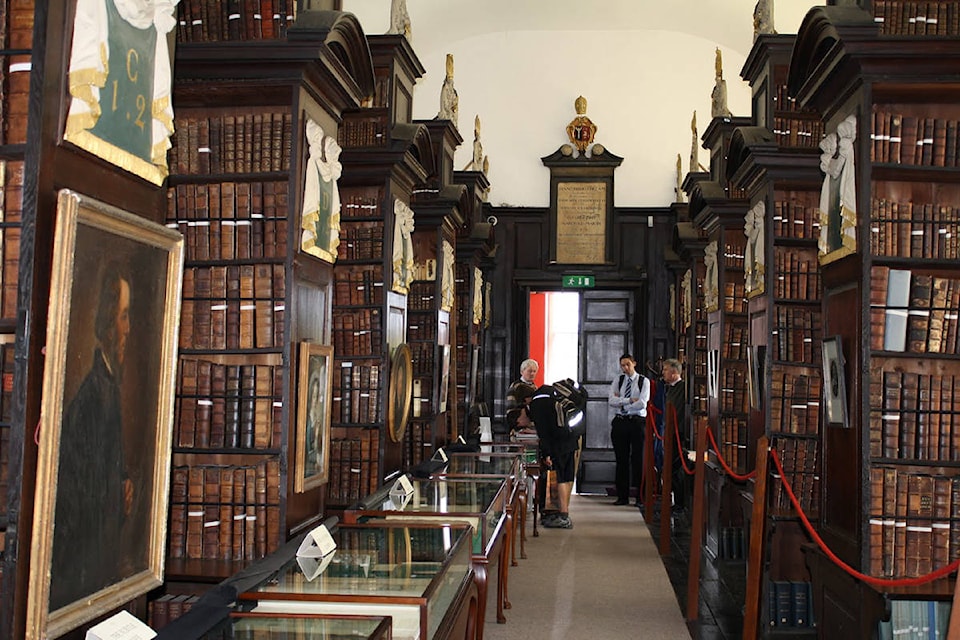Mike Selby
Two weeks ago, Rev. Roy Byrne tripped over a book in his rectory (Church of Ireland), and it was one he did not recognize. It was a 400-year-old ‘Book of Common Prayer,’ which had “Marsh’s Library” stamped inside it. That was why it wasn’t familiar to him; it didn’t belong to the rectory at all.
Rev. Byrne returned the book to Marsh’s Library, which is located in central Dublin. They were happy to have it back — it had been missing for 177 years.
Byrne’s kindness wasn’t unique though — people from all over Ireland had been returning seriously overdue books they have found in basements, attics, and thrift stores.
The library — Ireland’s oldest public one — was a favourite of thieves during the latter half of the 18th and early half of the 19th centuries. Preventive measures were taken, with bars and cages welded over the windows and doors, and reading rooms featuring locked doors and guards. Yet they still lost over 1,200 books during this time period.
And time is very special to Marsh’s; as they have worked very hard to be frozen in it.
Not only does the library have all of its original seating, tables, and shelving, but it does not have any books newer than 1799.
The building itself is named after its founder, Narcissus Marsh, who was the Archbishop of Dublin. A few years before his death in 1707, he donated his private collection of 25,000 books and hundreds of medieval manuscripts to the people of Ireland. An act of Parliament provided the land and building for it.
Besides its insistence on remaining in the 18th century, there are other unique features to it.
An Egyptian mummy was discovered in what was thought to be a box of books in 1888 (sent there by accident instead of Trinity College years earlier). The eastern most wall and many of the books shelved against it are riddled with bullet holes from the Easter Rising. And one of the remaining cages used to prevent theft has a replica of James Joyce’s skull hanging from it.
One book which hasn’t been stolen is the 1599 edition of ‘The Life & Reign of King Henry IIII’ by Sir John Hayward (note the odd use of IIII instead of IV.) The previous owner of the book had penned a poem opposite the book’s title page:
“If I this loosse: and you itt finde / I hop yow will nott bee unkind
Butt itt restore to mee againe / And I will thank you for your pains
I will sett downe my name to shew / wherby the oner you might knowe”
It is then signed by a Richard Barrett.
Marsh’s Library also appears in the 2012 children’s picture book ‘The Lost Library Book’ by Amanda Bell. Her book begins “Once upon a time, a man wandered into a junk shop and found a dusty, battered book with a strange diamond pattern on the front. Inside, the pages were covered in letters from an alphabet he didn’t understand, but the ancient manuscript had cast a spell on him, so he bought it anyway.”
The book in question is ‘Galeni Librorum’ — a Swiss medical textbook published in 1538. Bell didn’t have to do much imagining for her book; it was the true story of her husband. He found the lost book on a shelf of a Dublin junk shop, and bought with some other items. He knew it was old, but didn’t think it would valuable or of interest to anyone. Once back home he saw the “Marsh’s Library” stamp, and returned to its rightful home.
The Library was happy to have it back again, but this time they didn’t believe it had been stolen. The director stated it was probably “an informal case of a librarian lending a book out to an eminent scholar, who got run over by a horse and cart, or something, and wasn’t able to return it.”
Just another day in Marsh’s Library.
Mike Selby is Information Services Librarian at the Cranbrook Public Library
